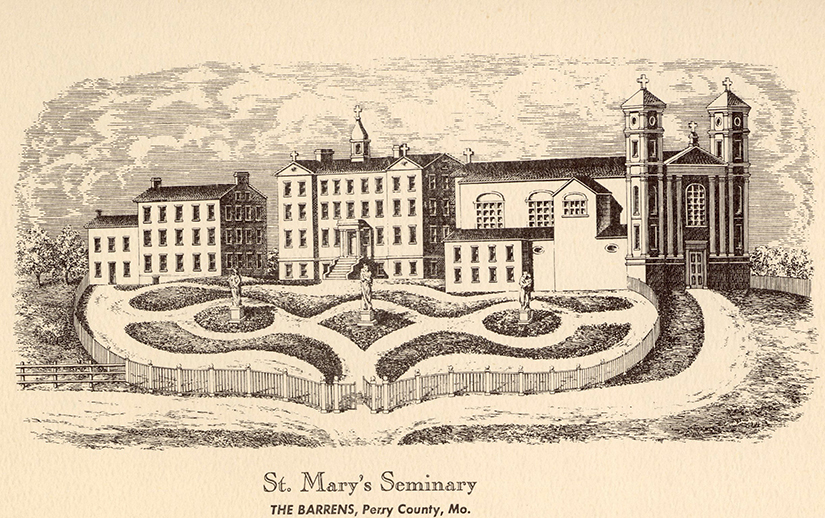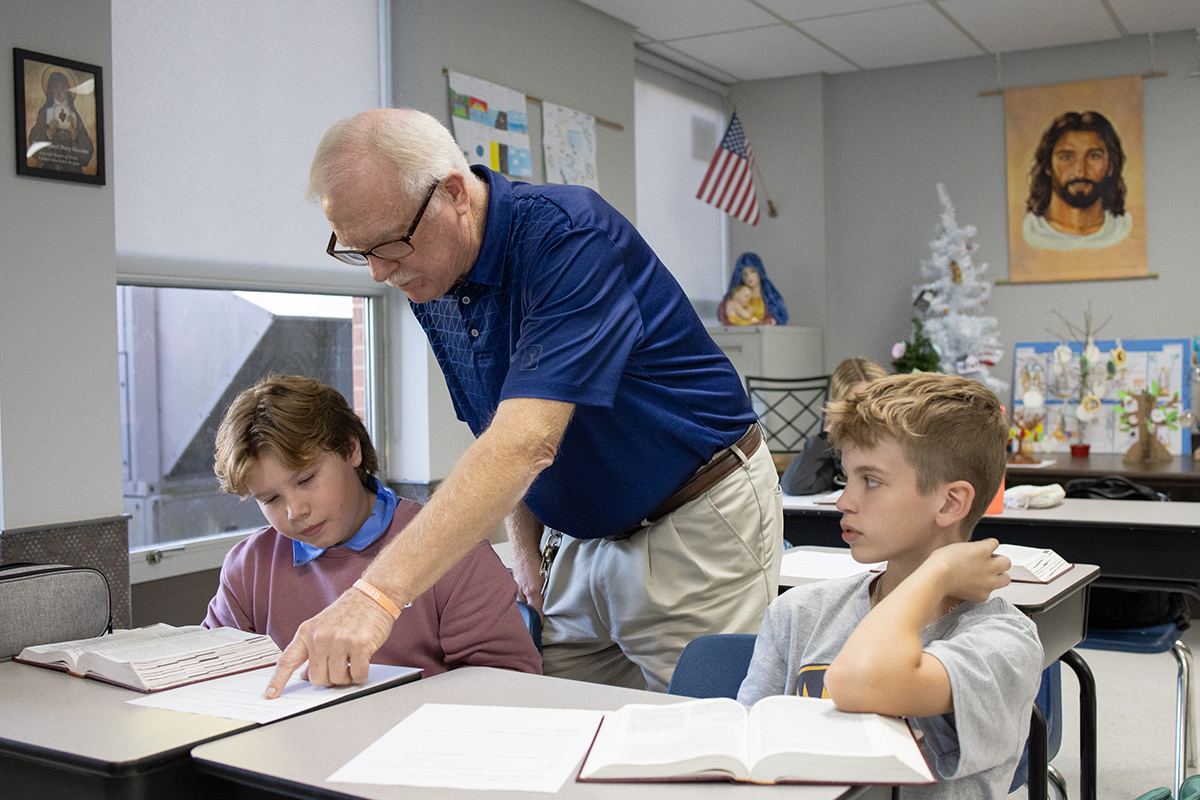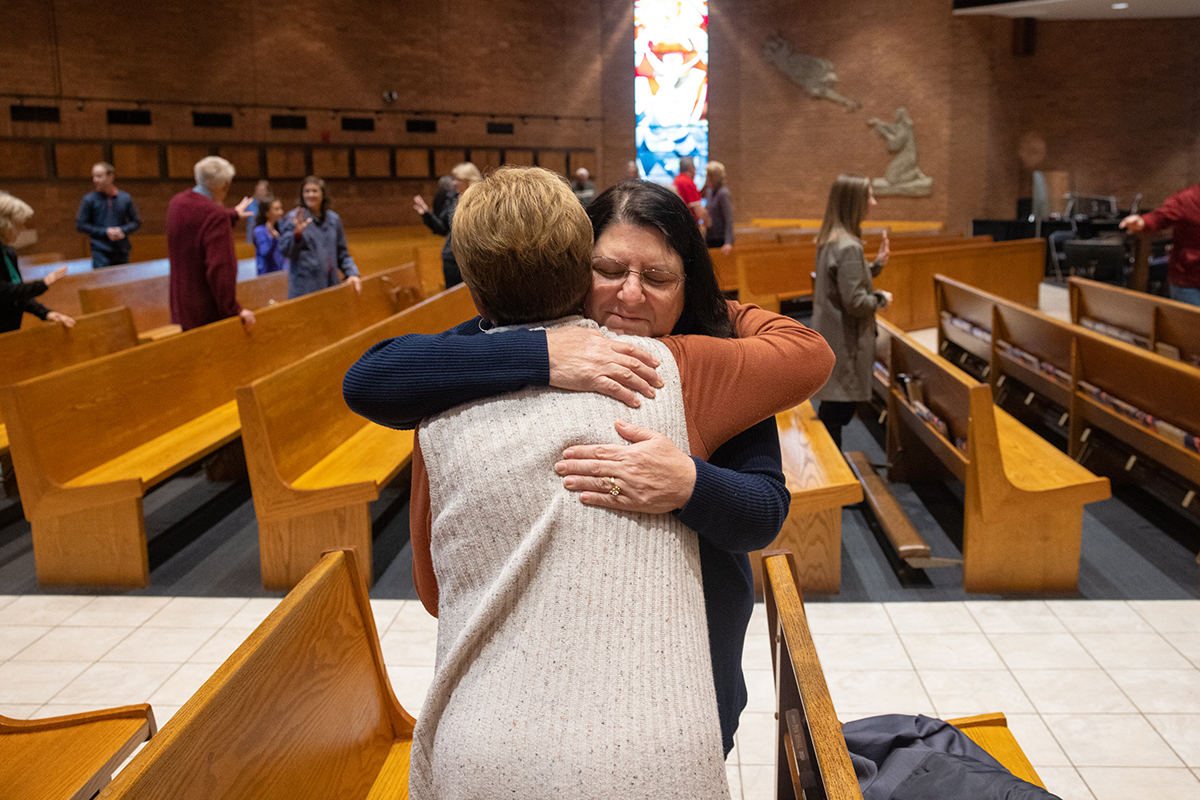Homegrown vocations in the archdiocese
Priestly vocations have long history in St. Louis, predating Missouri’s establishment as a state

As Bishop William Valentine DuBourg made his preparations to assume his episcopacy in St. Louis as Bishop of the Diocese of Louisiana and the Floridas, he realized that he would need new priests to tend to his small, but growing flock. In 1815, while in Rome advocating for support for his new diocese, Bishop DuBourg met Vincentian priests Father Felix De Andreis and Father Joseph Rosati. Both were filled with missionary zeal and quickly agreed to join him and help establish a new seminary.
After securing 640 acres near Perryville, Fathers Rosati and De Andreis led a small group of missionaries and novitiates to the site, known as the Barrens. Landing on Oct. 2, 1818, they founded St. Mary of the Barrens, the first seminary west of the Mississippi River.
By 1823, St. Mary of the Barrens hosted 53 seminarians, making it one of the largest seminaries anywhere in the United States. This included Louis Tucker, the first American-born seminarian enrolled there. St. Mary of the Barrens remained the seminary for the new Diocese of St. Louis until 1842.
On April 14, 1842, then-Bishop Peter Kenrick wrote, “We must transfer the Seminary to St. Louis and separate the diocesan seminarians from those of the Congregations of the Missions.” Kenrick first moved

the seminary to a house donated by the Soulard family, where it remained from 1842-48. In 1848, the seminary moved once again, this time to the newly established Theological Seminary of St. Louis in Carondelet.
In 1858, the Second Provincial Council of St. Louis consolidated seminary functions for the archdiocese at St. Vincent’s College in Ste. Genevieve. The Civil War limited enrollment, and Archbishop Kenrick was forced to move archdiocesan seminarians to sites throughout the country.
After several years of dispersing them, Archbishop John J. Kain, then coadjutor bishop to the ailing Archbishop Kenrick, set about bringing the seminarians home. In 1892, the Sisters of the Visitation moved their convent west from its location at Cass Avenue and 19th Street. Archbishop Kain assumed ownership of the former convent with the intent of opening a seminary there. On Sept. 21, 1893, Archbishop Kain officially opened the first Kenrick Seminary.
When Archbishop John J. Glennon was elevated to archbishop in 1903, he recognized that the seminary at Cass Avenue was already overcrowded. He purchased rural property in what would become Shrewsbury and raised funds for a new major seminary. In September 1915, 160 seminarians walked through the doors, and in April 1916, the building was formally consecrated as Kenrick Seminary.

The minor seminary at Cass Avenue was extensively damaged by the tornado that struck the city in 1927. Rather than make costly repairs to the old facility, Archbishop Glennon decided to build a new one on the same grounds as Kenrick Seminary. In 1931, the new Saint Louis Preparatory Seminary was born. Saint Louis Preparatory Seminary South High School opened in 1957, and Saint Louis Preparatory North High School opened in 1965. Saint Louis Preparatory Seminary became Cardinal Glennon College.
As demographics changed in the area, the archdiocese no longer needed such an extensive seminary system. In 1987, Saint Louis Preparatory-North High School was closed, and Prep South closed in 1991. The seminary functions were consolidated at Cardinal Glennon College, which became Kenrick-Glennon Seminary.
For more than 200 years, from its very foundations to today, vocations have found a home in the Archdiocese of Saint Louis.
Fair is the director of archives for the Archdiocese of St. Louis.
St. Mary of the Barrens Seminary in PerryvillePhoto Credits: Photos courtesy Archdiocesan Archives As Bishop William Valentine DuBourg made his preparations to assume his episcopacy in St. Louis as Bishop … Homegrown vocations in the archdiocese
Subscribe to Read All St. Louis Review Stories
All readers receive 5 stories to read free per month. After that, readers will need to be logged in.
If you are currently receive the St. Louis Review at your home or office, please send your name and address (and subscriber id if you know it) to subscriptions@stlouisreview.com to get your login information.
If you are not currently a subscriber to the St. Louis Review, please contact subscriptions@stlouisreview.com for information on how to subscribe.





